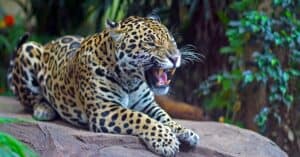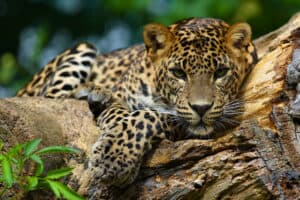Watch a jaguar swim like an alligator to catch an alligator!
The word “jaguar” originates from the indigenous word “yaguar,” which roughly translates to “he who kills with one leap.” And this video is the perfect example of a jaguar leaping for the kill. But not before a short swim!
Watch the Amazing Video Now!
The jaguar is a master of stealth and ambush. In this scene, it sneaks up on its unsuspecting prey with impressive agility and speed. Look closely at the water to see the jaguar swimming as smoothly as an alligator. Its sights are set on the big reptile resting on the beach.
First, you’ll see the alligator (actually a caiman) basking in the sun with its massive body relaxed. Suddenly, the jaguar’s head appears above the water line. It gets closer and closer until it can continue its sneak attack on land.
Creeping out of the water, the big cat slowly and carefully moves closer to its prey. The jaguar then grabs the caiman with a powerful chokehold, immobilizing it! Although this can be enough to subdue prey, the jaguar must bite down on the back of the reptile’s head or skull to get the full advantage.
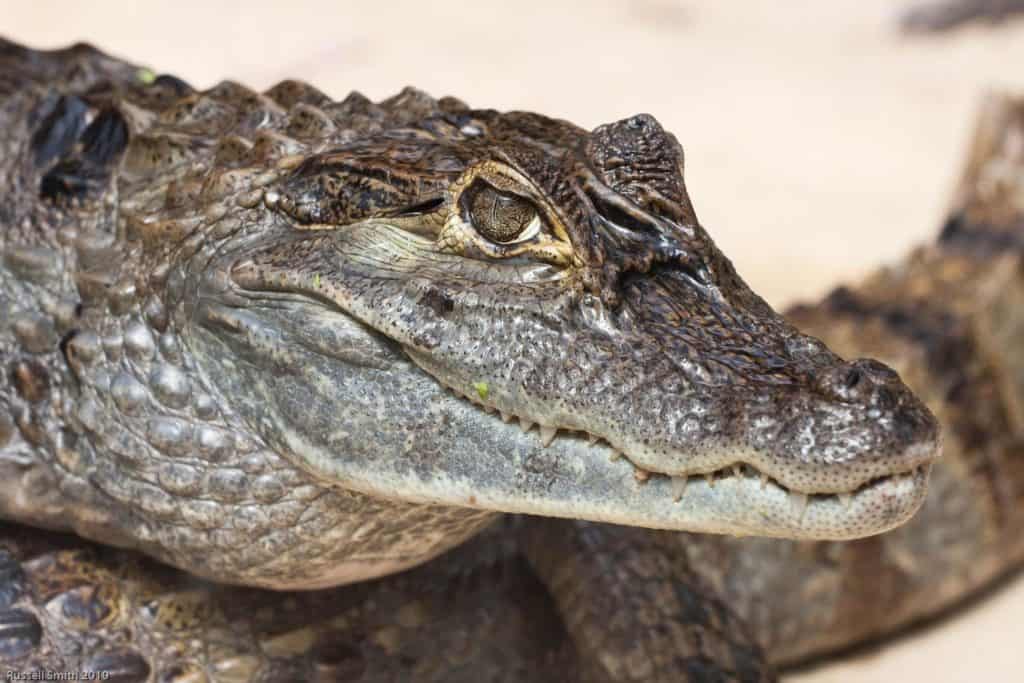
Caimans have shorter and wider snouts than crocodiles.
After grabbing the caiman, the jaguar doesn’t waste time carrying its kill away from the crime scene. This is typical big cat behavior. Jaguars like to take their kills off the beach so they can safely eat under the cover of the jungle.
Jaguars Are Expert Swimmers
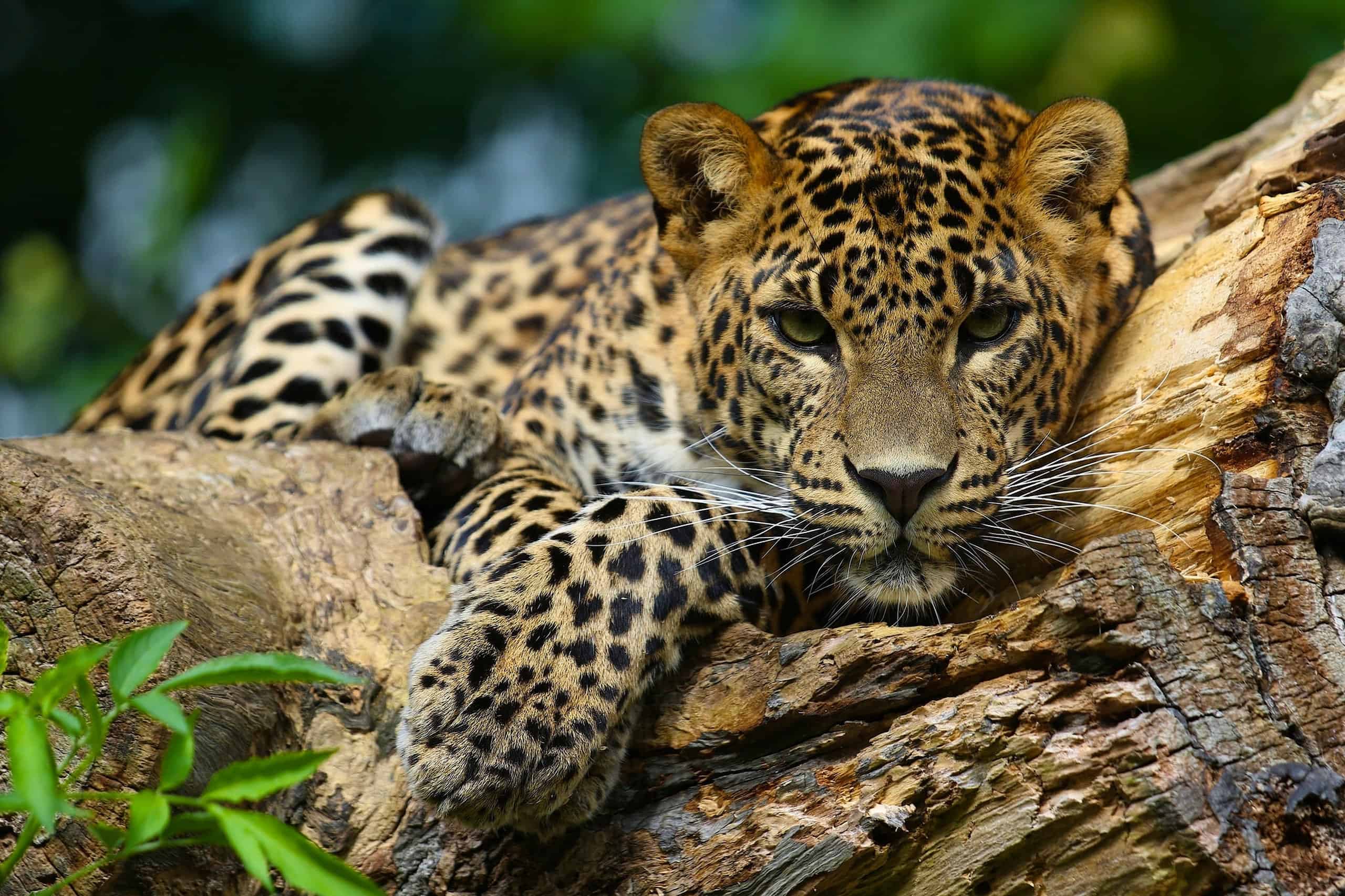
Jaguars are excellent swimmers and can cath fish and other aquatic animals while hanging from branches.
©L-N/Shutterstock.com
Caimans aren’t the only thing jaguars like to eat! Jaguars are excellent swimmers and can catch fish or other aquatic animals while clinging to an overhanging branch. These big cats will also hunt deer, tapirs, and capybara. They’ll even climb trees or launch themselves in the air to catch a monkey! Researchers at UC Santa Cruz are using new tracking techniques to study how jaguars hunt. It’ll be exciting to see what other hunting behaviors these big cats have.
Alligator, Crocodile, or Caiman?
Is this video showing a jaguar catching an alligator, crocodile, or caiman? If you guessed Caiman, you’re right! Although they’re both part of the order Crocodylia, caimans, and crocodiles are in different families. True crocodiles are part of the Crocodylidae family, while caimans are in the Alligatoridae family. This video shows a jaguar chowing down on a smaller-sized caiman.
More About Caimans
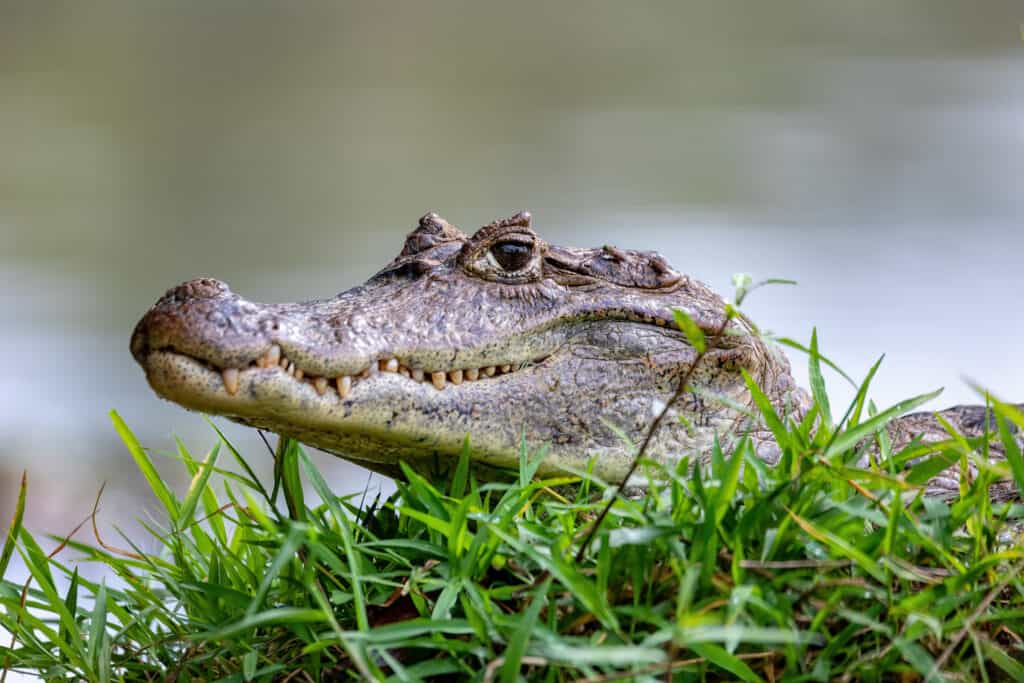
Caimans live throughout Central and South America, primarily in marshy wetlands, rivers, and lakes.
©Artush/Shutterstock.com
Caimans usually grow to be between six to eight feet long, but some species reach up to 16 feet in length! They weigh anywhere from 20 pounds to 2,200 pounds and come in various colors like brown, green, gray, and black. Caimans live throughout Central and South America, primarily in marshy wetlands, rivers, or lakes.
These reptiles hunt and scavenge for their food. They’ll eat fish, birds, turtles, and small mammals. Although they have few predators, the ones they do have are mighty. Jaguars and anacondas both enjoy feasting on caimans.
Jaguars are an important part of the South American ecosystem. Not only do they help keep the population of many animals balanced, but their presence is also a reminder that wilderness areas need to be protected. So give this big cat its due. Watch a jaguar swim like an alligator to catch an alligator! The video is below, along with some more fascinating finds.
The photo featured at the top of this post is © Gurkan Ozturk/Shutterstock.com
Sources
- News 19, Available here: https://www.wltx.com/article/news/local/the-differences-between-alligators-and-caimans/101-2b7aac55-92bd-4fd1-a130-c78a8d256a37#:~:text=things%20like%20that.%22-,It%20is%20easy%20to%20confuse%20caimans%20and%20small%20alligators.,and%20are%20bigger%20than%20caimans
- One Kind Planet, Available here: https://onekindplanet.org/animal/jaguar/
- Seaworld, Available here: https://seaworld.org/animals/facts/reptiles/caimans/
Thank you for reading! Have some feedback for us? Contact the AZ Animals editorial team.




